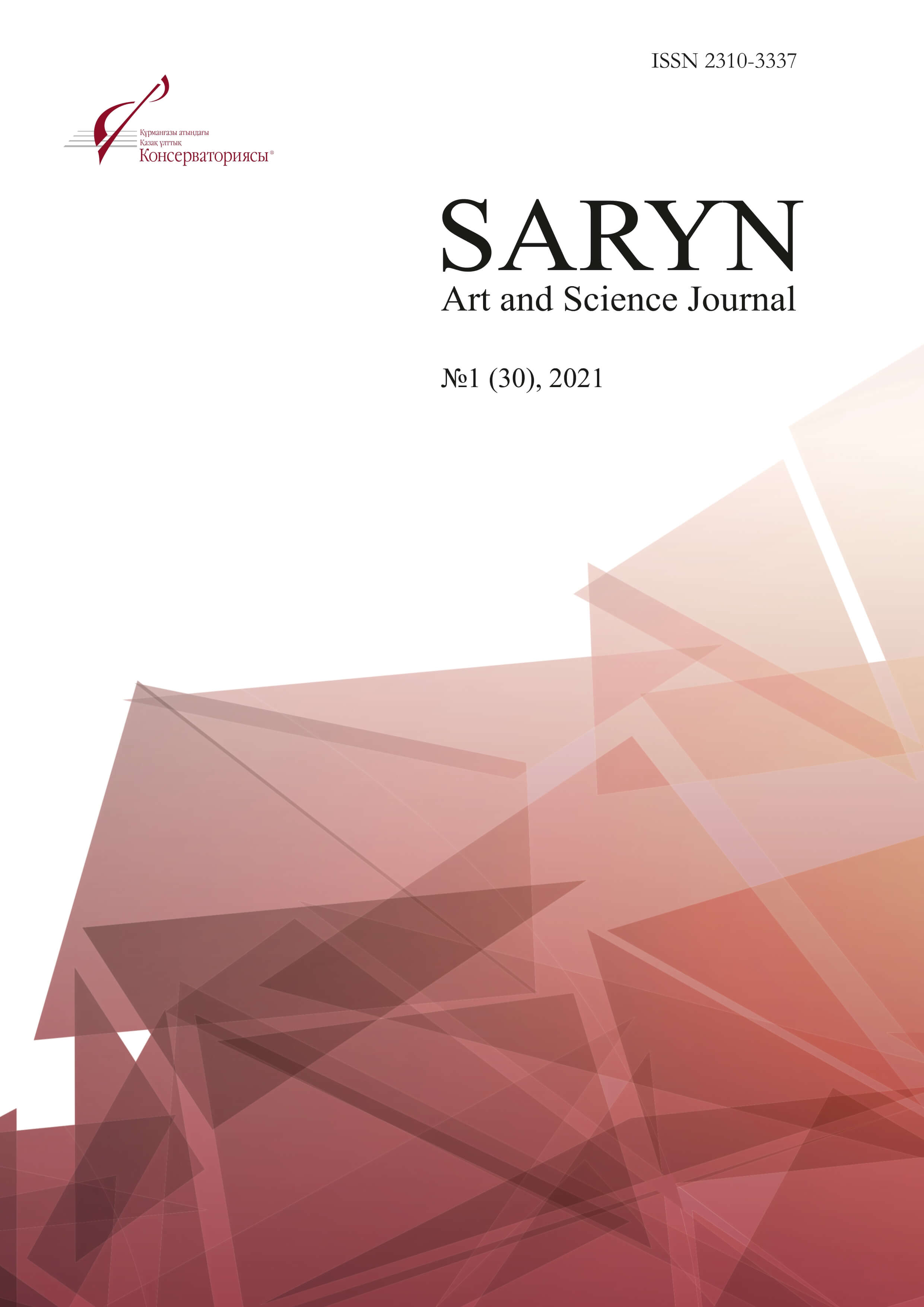Article information
Article publication date
2021-03-30
Article Page
58-63
Chapter
Arts & Humanities
License
Abstract
This article provides a performing analysis of the percussion part in the work of the triumphal march "Voice of Asia" by the famous composer Adil Bestybaev. The purpose of the study is to identify the features of the drum kit used as a set of instruments - sound production (expressive capabilities of timbres), as well as to determine the functional load of the drump. For which the part of percussion instruments is singled out both separately and in an ensemble with other orchestral partp. The tasks were set: 1) Describe the rhythm (rhythmic pattern), in synthesis with texture and dynamicp. To understand some of the functions of the rhythmic pattern, the technique of description through the terminology (slang) of arrangers and computer scientists was used - "drum part", "sustain", "samples", "punch rhythm", etc .; 2) Reveal the "skill" of the "drummer" by listening to audio recordings, and giving a brief description of the performance of the drum kit part; 3) Determine the origins of the style of "The Voice of Asia" by Adil Bestybaev, considering and researching the theoretical and methodological base, where the structuring of traditional Kazakh music in the context of Turkic music in general is clearly taking place, at the same time, defining the composer's style as brightly national and modern.
Keywords
Adil Bestybaev
Voice of Asia
drum kit part
References
Некрасв С.И., Некрасова Н.А. Философия науки и техники: тақырыптық сөздік [Мәтін] / Некрасов С.И., Некрасова Н.А. – Орёл: ОМУ, 2010. – 289 б. 2. Создание партии ударных инструментов как метод освоения современных музыкальных стилей студентами на занятиях по дисциплине «практикум по музыкальной стилистике» //RSVPU_2016_242.pdf «Российский государственный профессионально-педагогический университет» – Екатеринбург, 2016. 3. Адиль Бестыбаев: Мы не беженцы! // [Электронный ресурс] // https://www.caravan.kz/gazeta/adil-bestybaev-my-ne-bezhency-52711/24.10.2008. 4. Кузбакова Г. Композиторы Казахстана: реальность бытия//Континент. – 18.9–1.10.2002. – № 18(80). 2012 жылы 10 маусымда мұрағатталған.
Курпякова Н. Из слова древнего рождается мотив//Казахстанская правда.– 22.11.2011. – № 371–372 (26762–26763).
Nekrasv P.I., Nekrasova N.A. Filosofiya nauki i tekhniki: taқyryptyқ sөzdіk [Mәtіn] / Nekrasov P.I., Nekrasova N.A. – Oryol: OMU, 2010. – 289 b.
Sozdanie partii udarnyh instrumentov kak metod osvoeniya sovremennyh muzykal'nyh stilej studentami na zanyatiyah po discipline «praktikum po muzykal'noj stilistike» //RSVPU_2016_242.pdf «Rossijskij gosudarstvennyj professional'no-pedagogicheskij universitet» – Ekaterinburg, 2016.
Adil' Bestybaev: My ne bezhency! // [Digital source] // https://www.caravan.kz/gazeta/adil-bestybaev-my-ne-bezhency-52711/24.10.2008.
Kuzbakova G. Kompozitory Kazahstana: real'nost' bytiya//Kontinent. – 18.9–1.10.2002. – № 18(80). 2012 zhyly 10 mausymda mұraғattalғan.
Kurpyakova N. Iz slova drevnego rozhdaetsya motiv//Kazahstanskaya pravda.– 22.11.2011. – № 371–372 (26762–26763).




